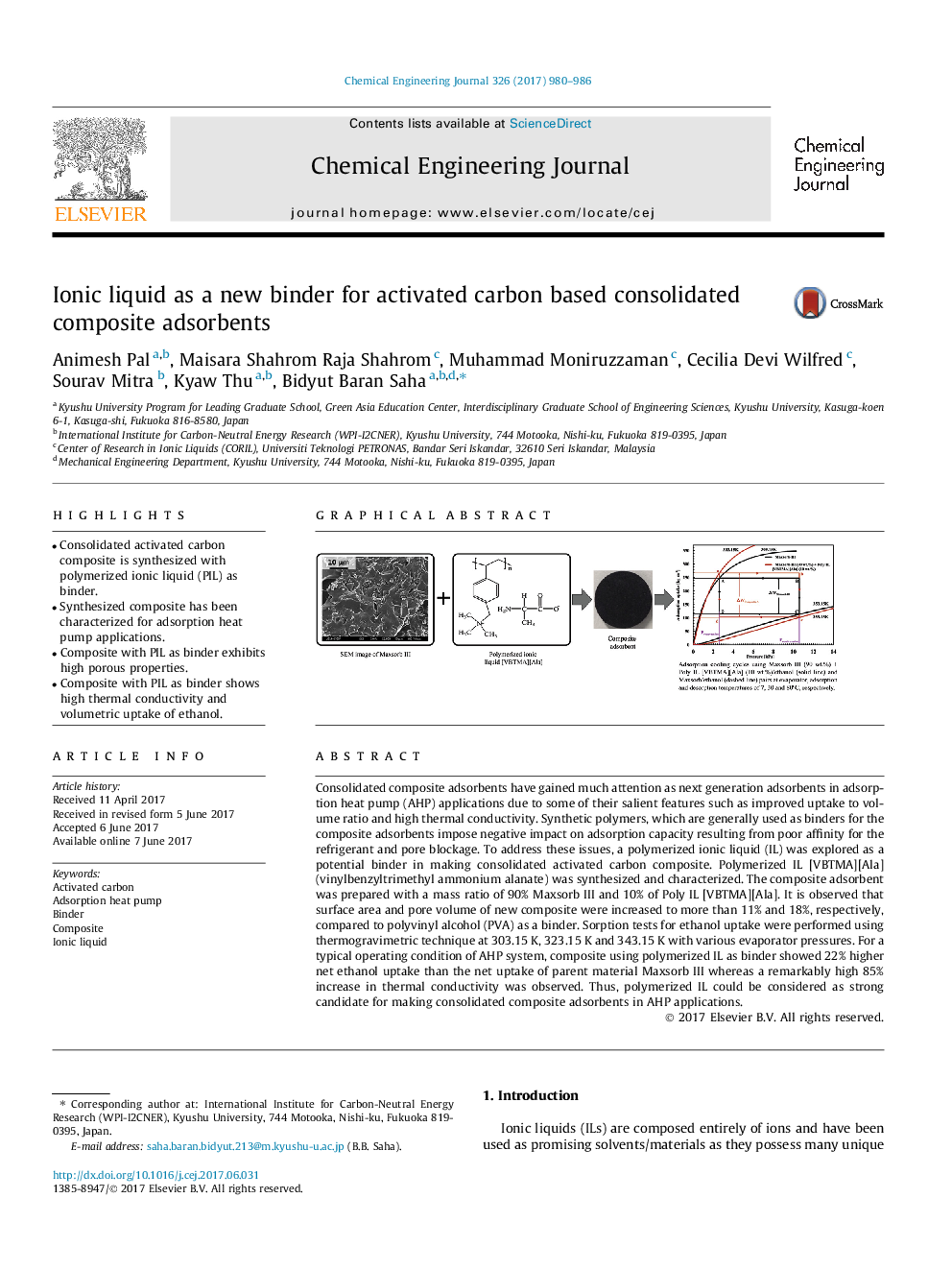| Article ID | Journal | Published Year | Pages | File Type |
|---|---|---|---|---|
| 6465531 | Chemical Engineering Journal | 2017 | 7 Pages |
â¢Consolidated activated carbon composite is synthesized with polymerized ionic liquid (PIL) as binder.â¢Synthesized composite has been characterized for adsorption heat pump applications.â¢Composite with PIL as binder exhibits high porous properties.â¢Composite with PIL as binder shows high thermal conductivity and volumetric uptake of ethanol.
Consolidated composite adsorbents have gained much attention as next generation adsorbents in adsorption heat pump (AHP) applications due to some of their salient features such as improved uptake to volume ratio and high thermal conductivity. Synthetic polymers, which are generally used as binders for the composite adsorbents impose negative impact on adsorption capacity resulting from poor affinity for the refrigerant and pore blockage. To address these issues, a polymerized ionic liquid (IL) was explored as a potential binder in making consolidated activated carbon composite. Polymerized IL [VBTMA][Ala] (vinylbenzyltrimethyl ammonium alanate) was synthesized and characterized. The composite adsorbent was prepared with a mass ratio of 90% Maxsorb III and 10% of Poly IL [VBTMA][Ala]. It is observed that surface area and pore volume of new composite were increased to more than 11% and 18%, respectively, compared to polyvinyl alcohol (PVA) as a binder. Sorption tests for ethanol uptake were performed using thermogravimetric technique at 303.15Â K, 323.15Â K and 343.15Â K with various evaporator pressures. For a typical operating condition of AHP system, composite using polymerized IL as binder showed 22% higher net ethanol uptake than the net uptake of parent material Maxsorb III whereas a remarkably high 85% increase in thermal conductivity was observed. Thus, polymerized IL could be considered as strong candidate for making consolidated composite adsorbents in AHP applications.
Graphical abstractDownload high-res image (102KB)Download full-size image
